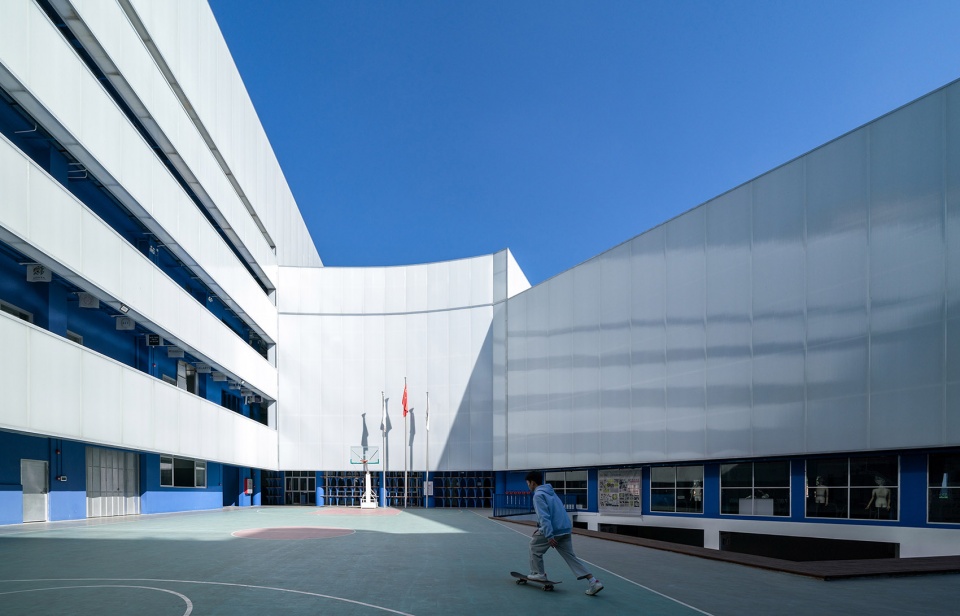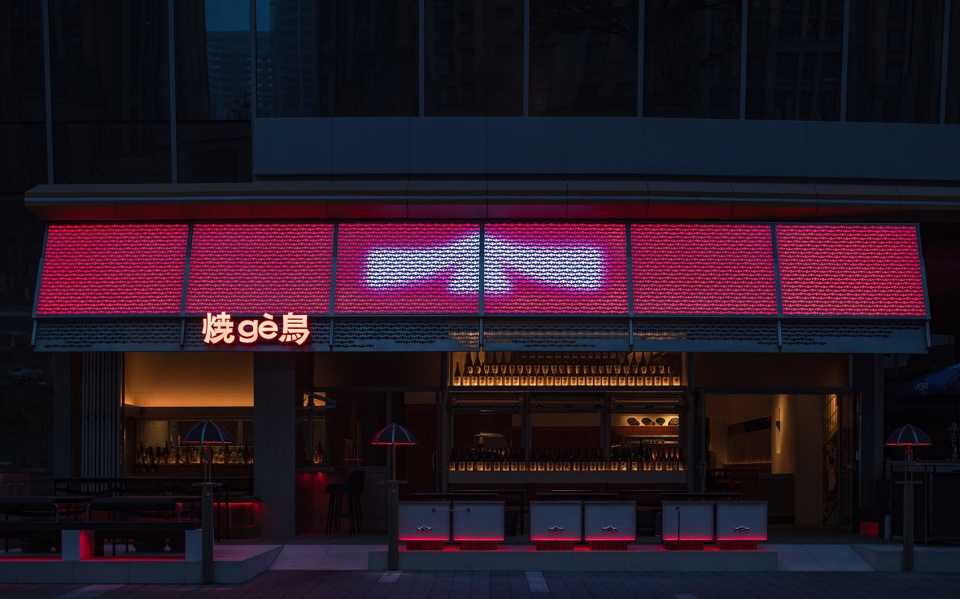

Sawo Rontgen咖啡馆位于一座住宅区的前院,是Sawo Coffee的第二家门店。为了给店铺赋予独特性,设计团队从场地所在的Rontgen街道汲取灵感,并将其作为营造空间视觉品质的依据。
Sawo Rontgen occupies the front yard of an existing house in a residential area with a strong tie to medical facilities. Searching for a unique identity for the second home of Sawo Coffee, we took the location’s rontgen street name as an identity generator and play around with the visual quality of rontgen.
▼从庭院望向咖啡馆建筑,View to the coffee shop from the yard © KIE
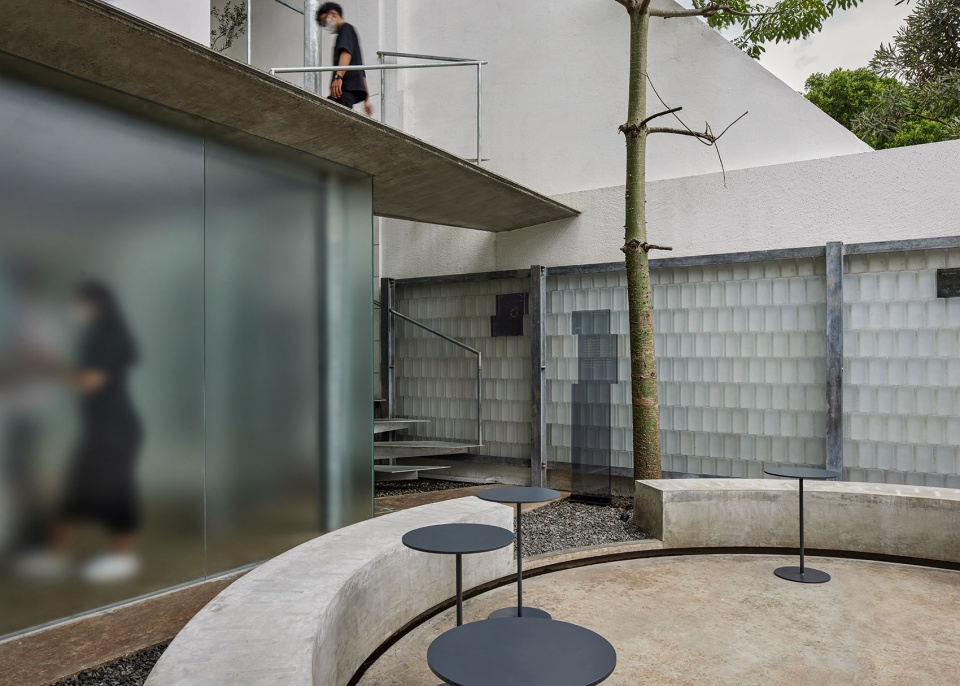
项目以玻璃砖和酸性玻璃为主要材料,营造出具有变化的透明度的空间。玻璃砖的排列围合成一个浮动的“盒子”,为前院置入了一个虚拟的边界,有效地界定出了咖啡馆空间。
▼轴测图,Axon © Dhanie & Sal
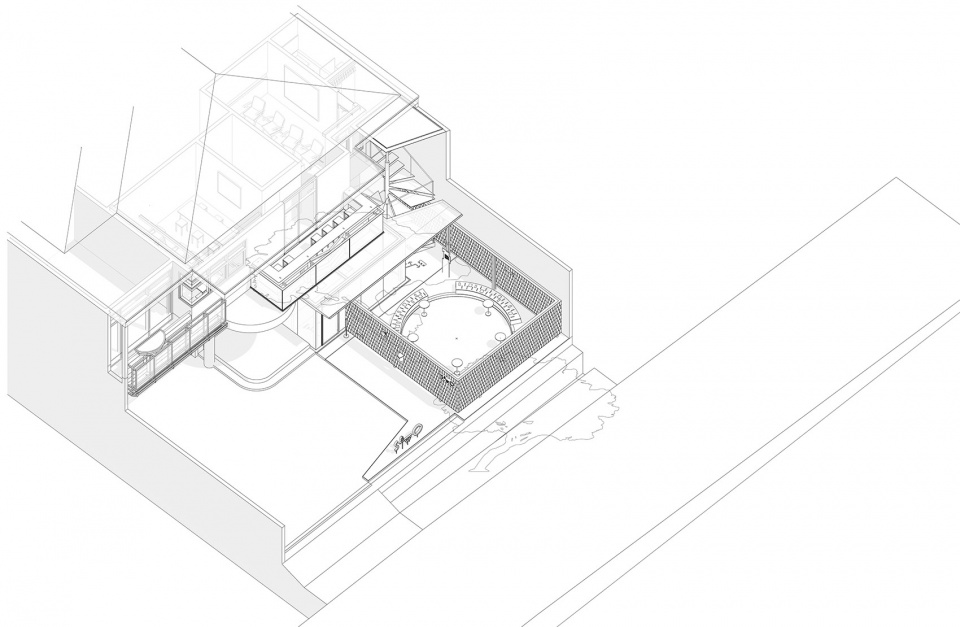
Exploring different modes of transparency to achieve rontgen-like character, glass brick and acid glass were used as the main materials. The glass bricks arranged as a floating box demarcating the front yard effectively as a space for the cafe, forming a pseudo-boundary.
▼沿街立面,Street facade © KIE
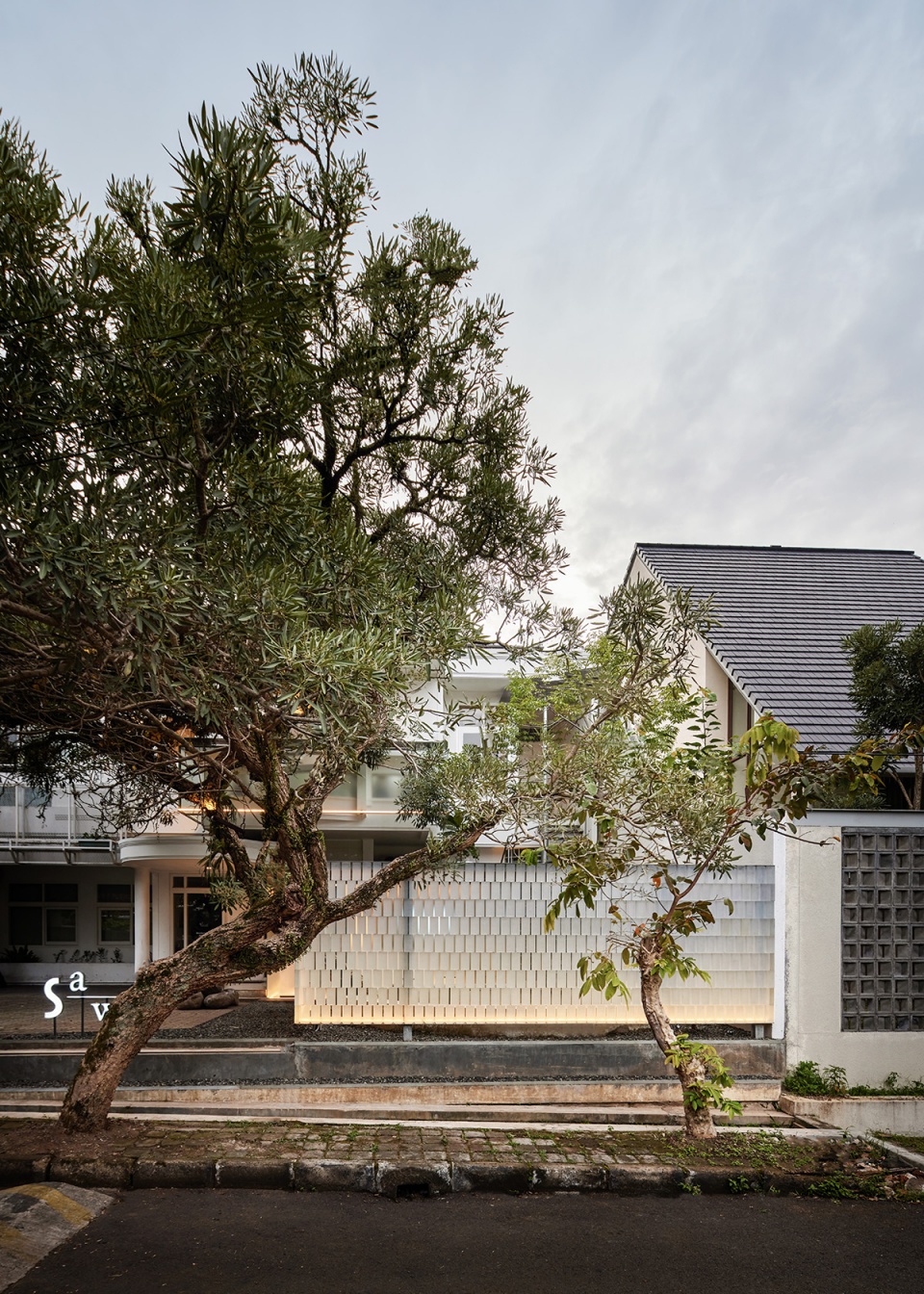
▼藏在玻璃盒子内的露天座位 © Salman Rimaldhi
The outdoor seating hidden inside the box
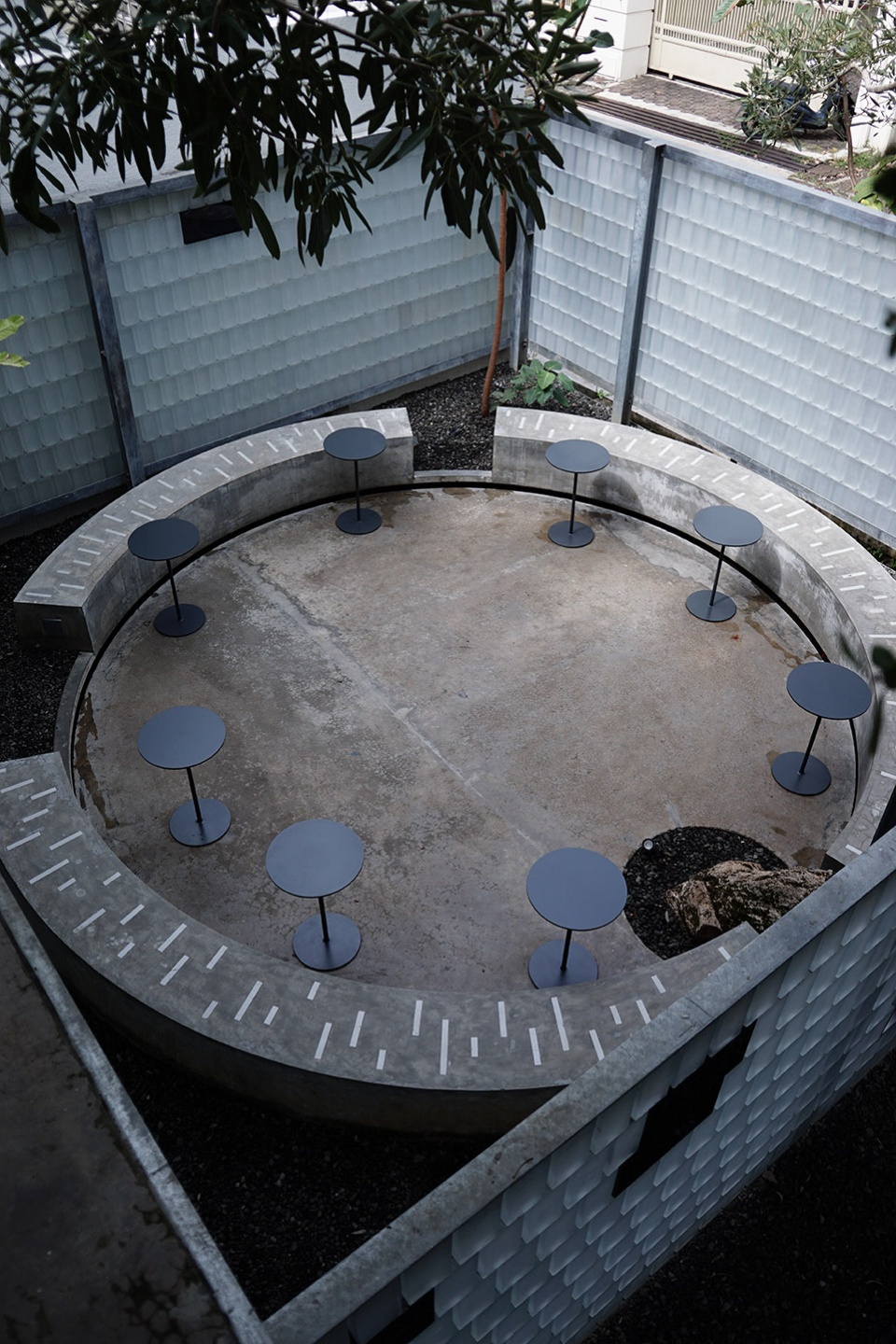
建筑的表皮也是用酸性玻璃建造,将既有房屋的结构元素覆盖起来,从而在不明显改动既有建筑的前提下增加了一个额外的层次。玻璃材料与既有结构和场地中的自然元素并置,实现了设计一开始想要实现的大范围的透明观感。
Acid glass were used as the skin of the pavilion and covers elements from the existing house, adding an extra layer to the existing house without making significant changes. The two materials juxtaposed with both the structural and natural elements, resulting in a broad spectrum of visual transparency we wanted to achieve.
▼玻璃材料与自然元素并置 © KIE
Glass material is juxtaposed with natural elements
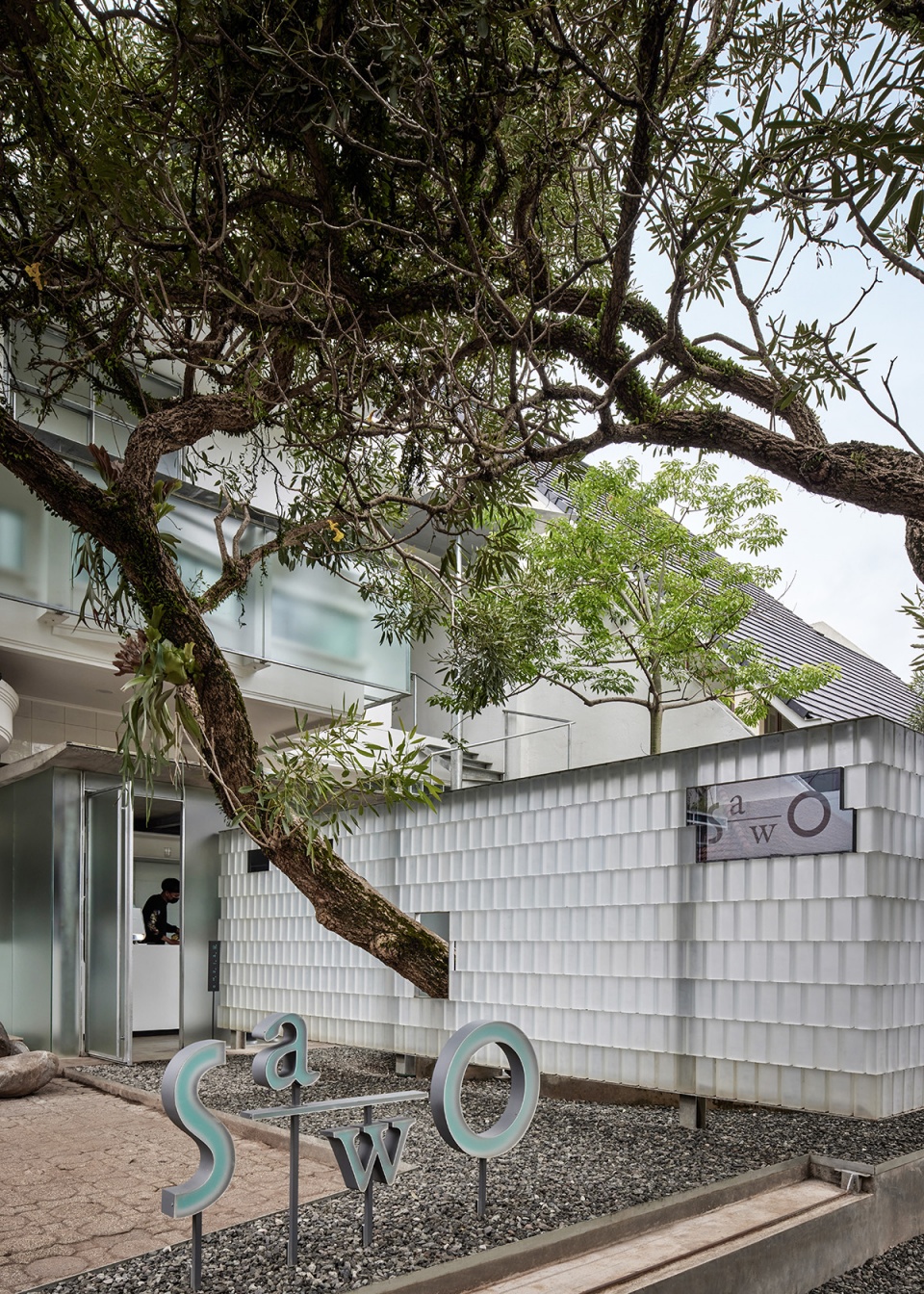
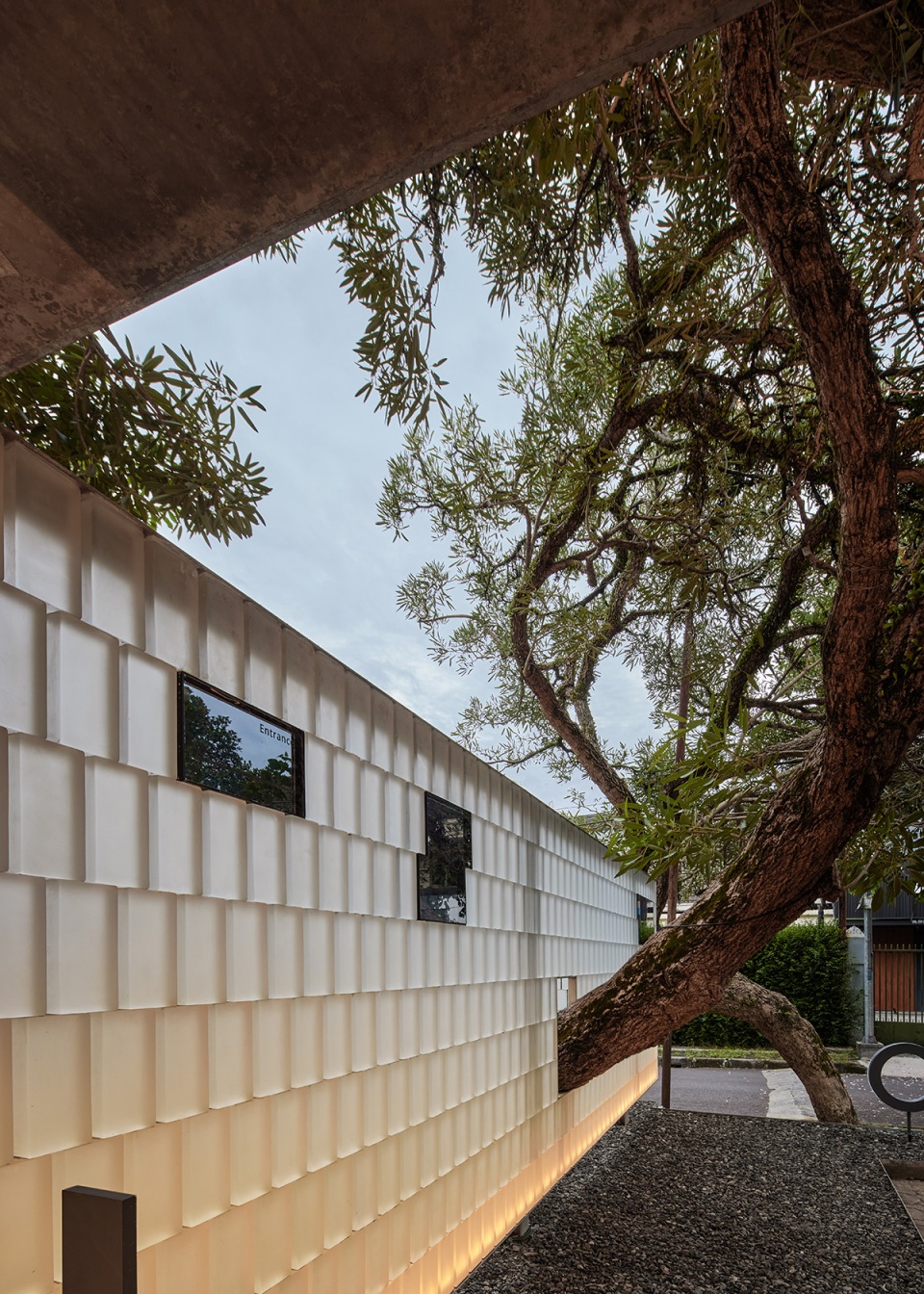
咖啡馆所在的体量采用了热浸镀锌处理的H型钢,裸露的结构元素与暧昧的玻璃表面构建出一种类似于“骨骼”与“皮肤”关系,将咖啡馆从视觉上与rontgen街道的肌理融合在一起。
The structure uses exposed H-beam steel in hot-dip galvanized finish. The bare structural elements along with the blurred transparency of the glass brick and the acid glass meant to resemble the skin and bone quality of the rontgen visual.
▼圆形露天座位,Circular outdoor seating © KIE
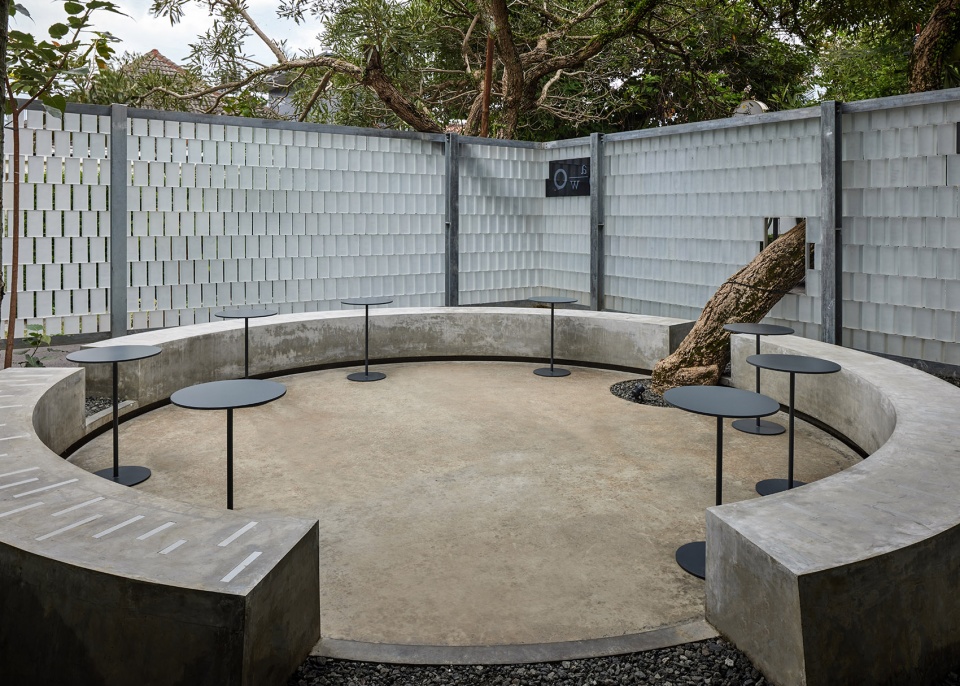
▼室内外过渡区,The transition area between indoor and outdoor space © KIE

玻璃房子内设有一个显眼的白色咖啡吧台,是Sawo Coffee的标志性元素,能够在顾客进入咖啡区之前提供服务。玻璃围墙内部是一个圆形的露天座位区,其设计灵感源于Sawo的品牌标识。座位的形式营造出一种平静的氛围,提供了一个与建筑相互对话的非正式空间。建筑一侧的钢制旋转楼梯可以通往顶层的就座区。
The glass pavilion contains a stark white coffee bar, a signature of Sawo Coffee, serving customers before they enter the cafe area. Hidden inside the box, is an outdoor seating of a circular shape, taking cues from the logo. Its strong form invokes a calming atmosphere, an informal space in dialogue with the architecture. Beside the pavilion a steel staircase is placed, giving access to the acquired room on the upper floor which serves as the indoor seating area.
▼咖啡馆入口,Entrance © KIE
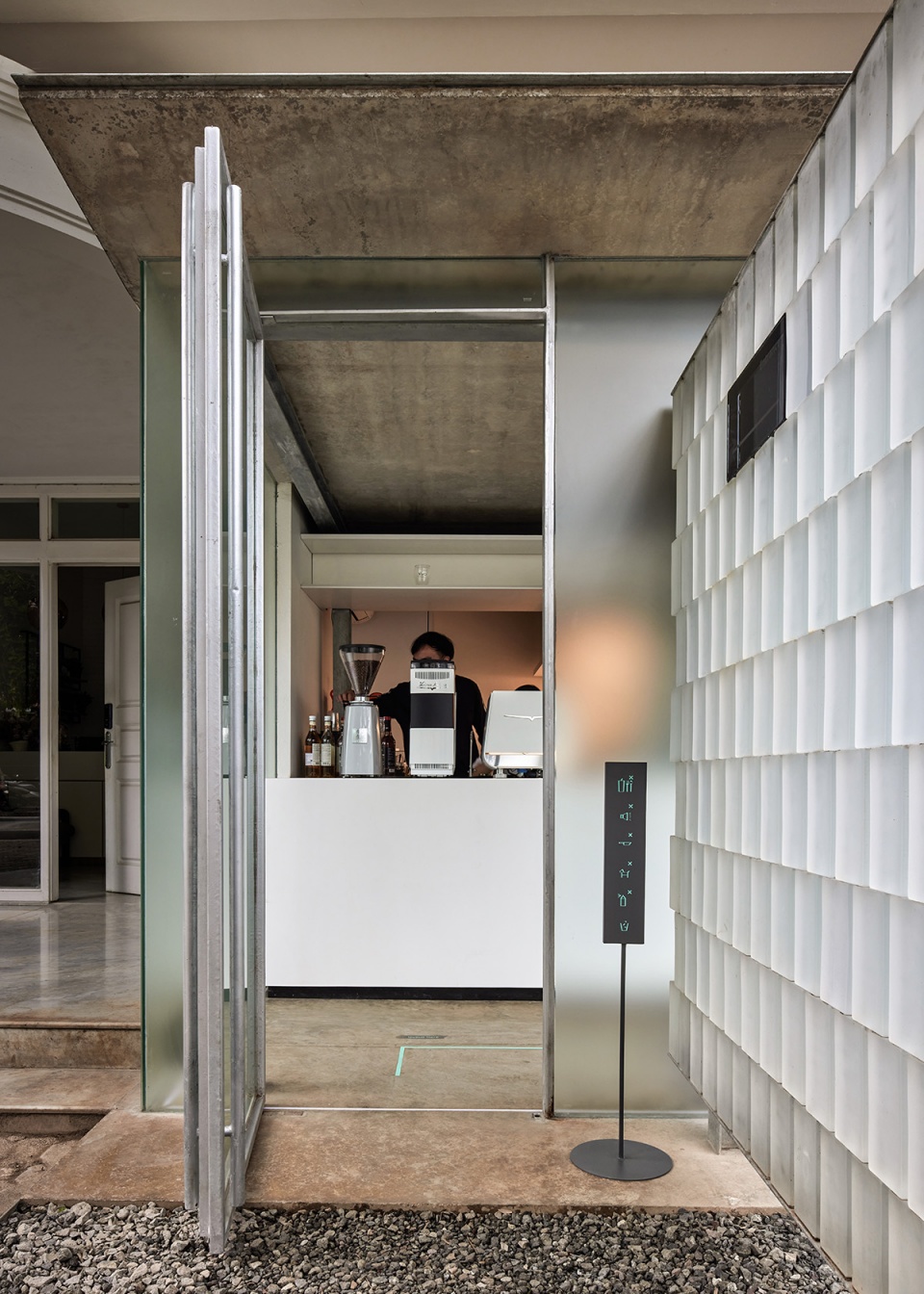
▼咖啡吧台,Coffee bar © KIE
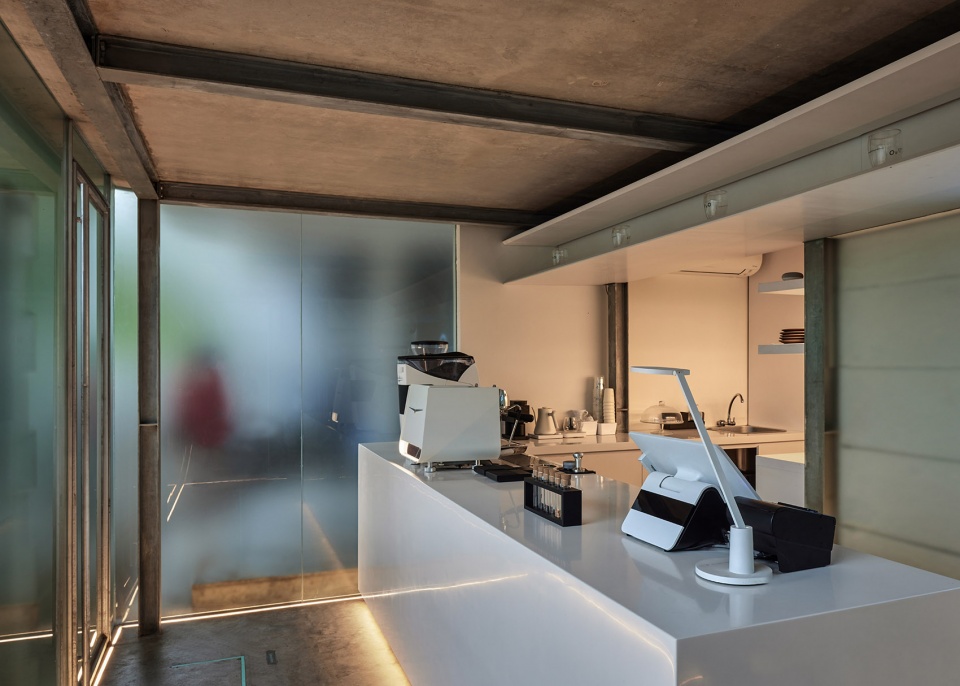
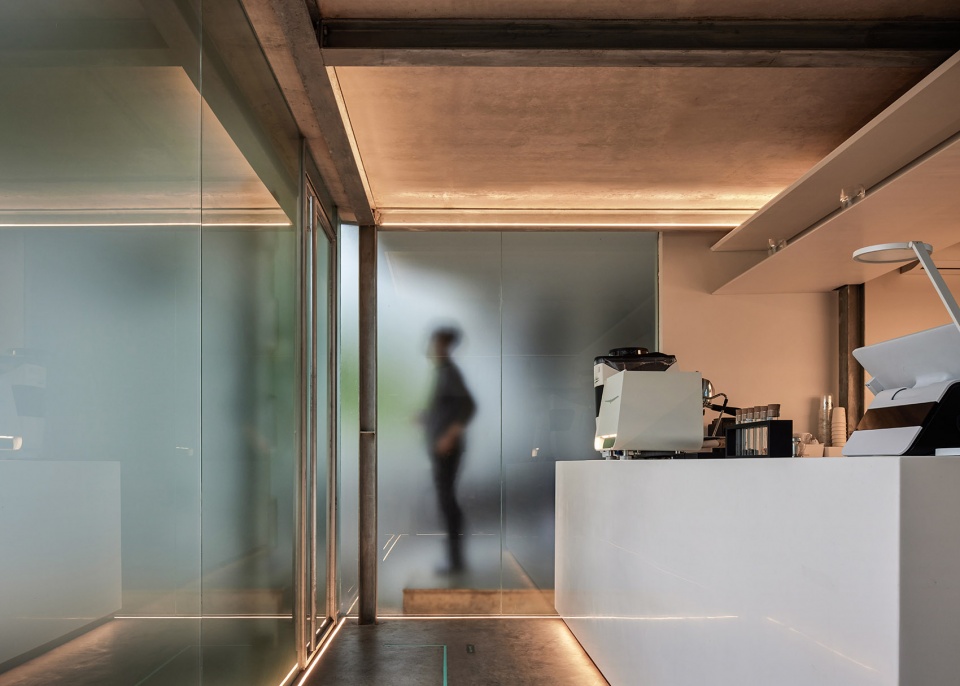
▼从吧台区域望向楼梯 © KIE
View to the staircase from the coffee bar
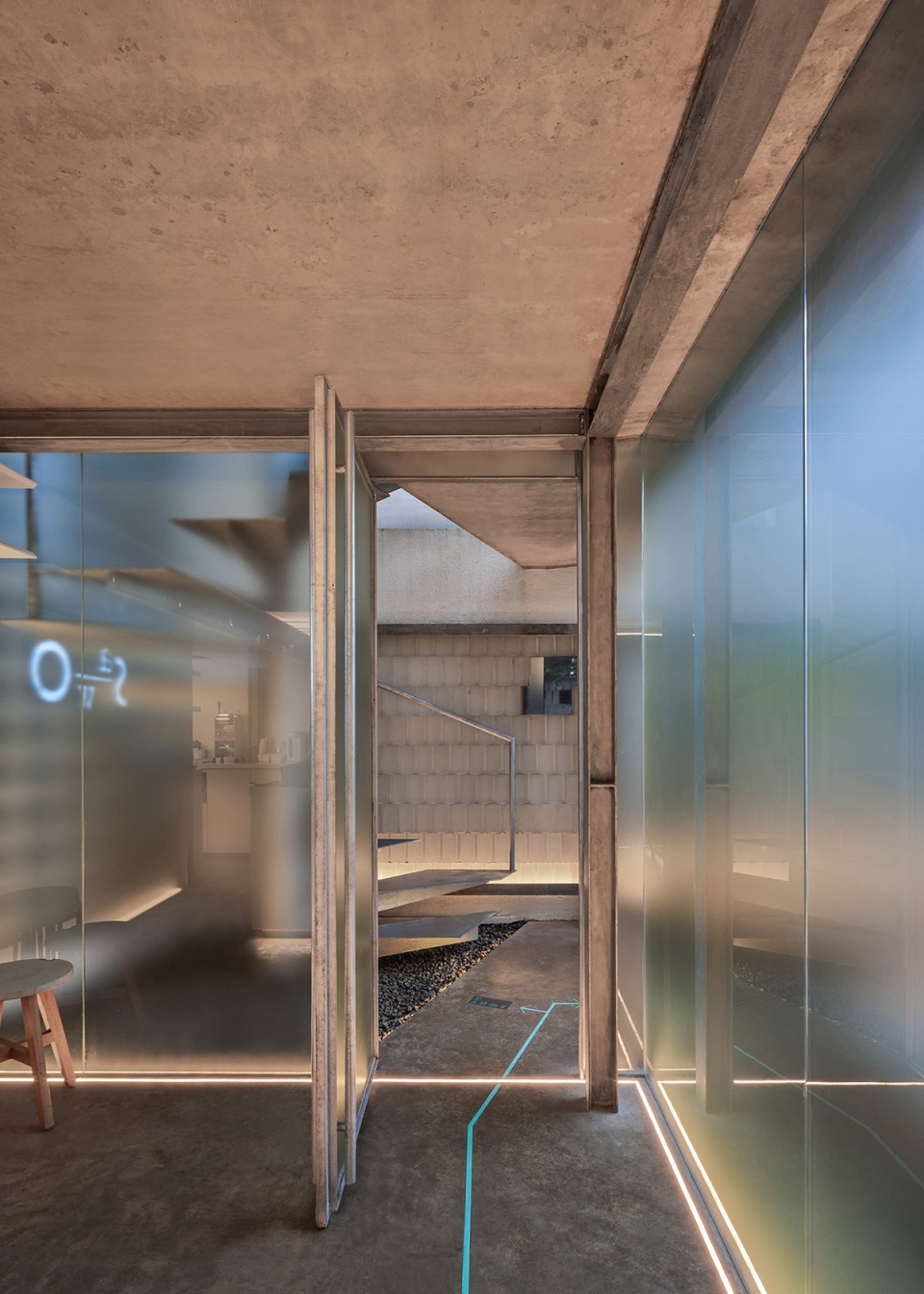
▼楼梯通向二层座位 © KIE
Staircase leading to the upper floor
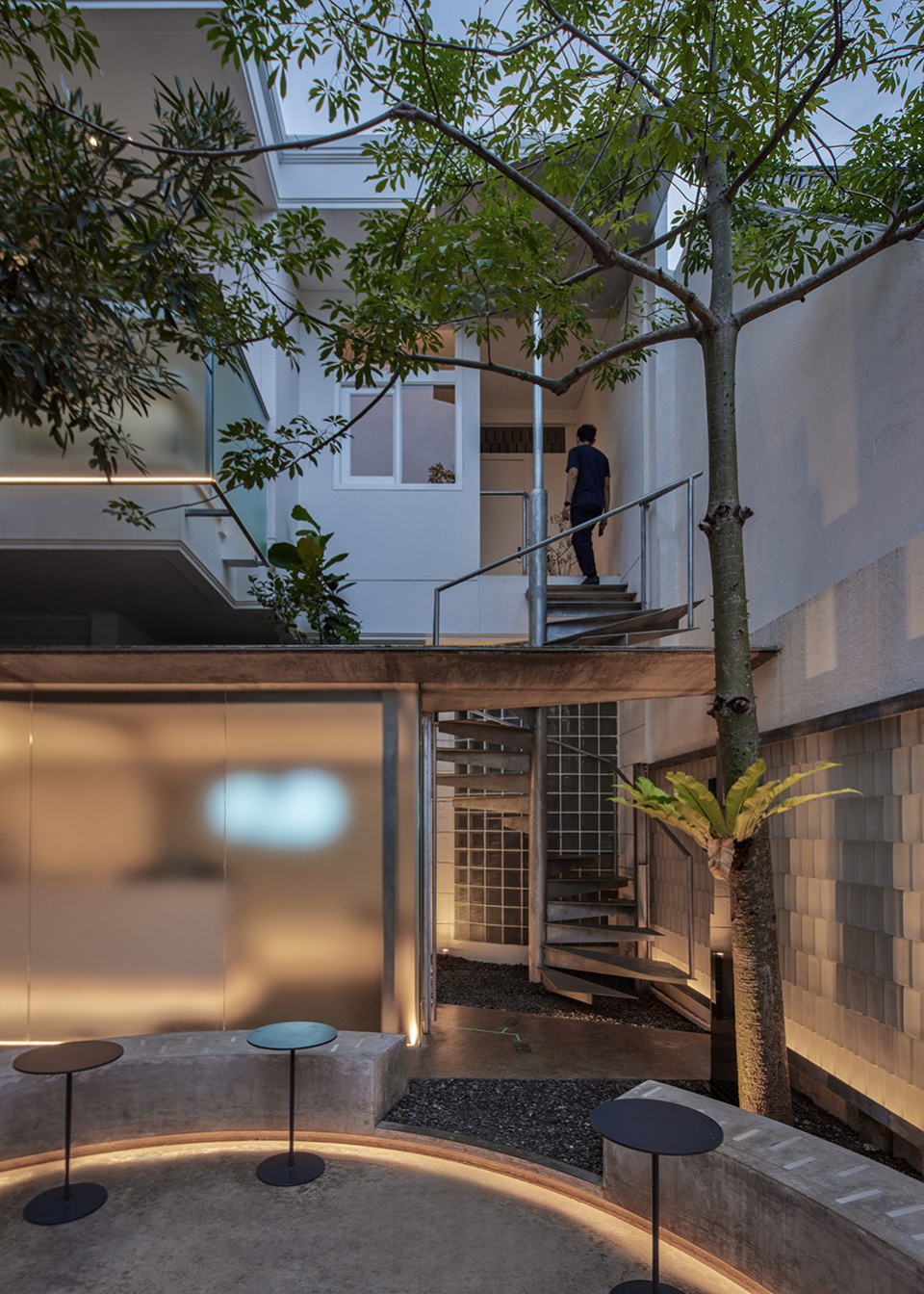
▼二层座位区,First floor seating © KIE
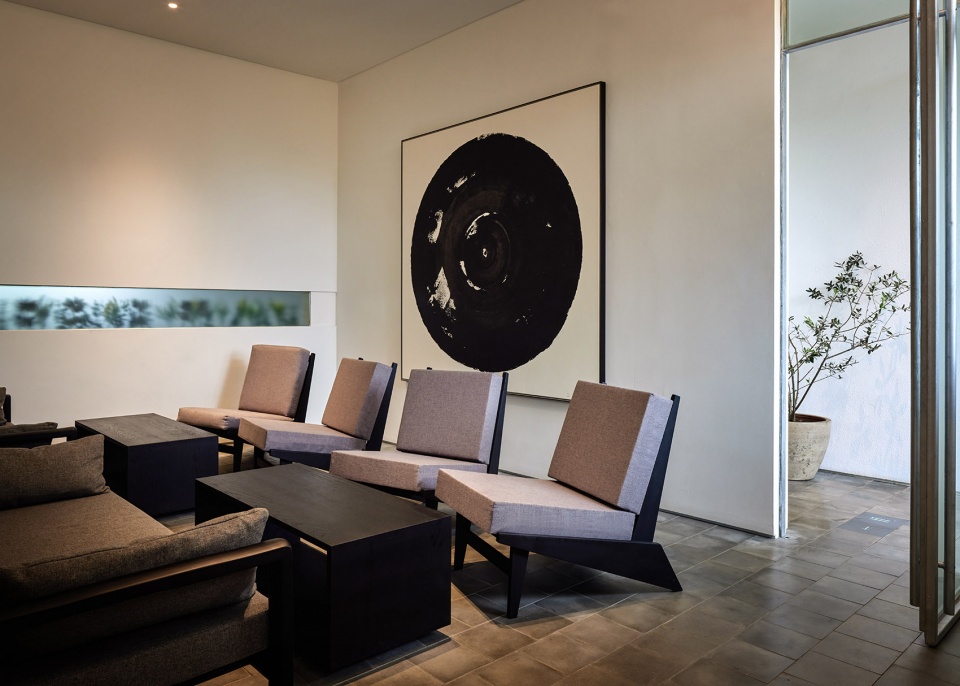
▼阳台和室内座位,Balcony and indoor seating © KIE
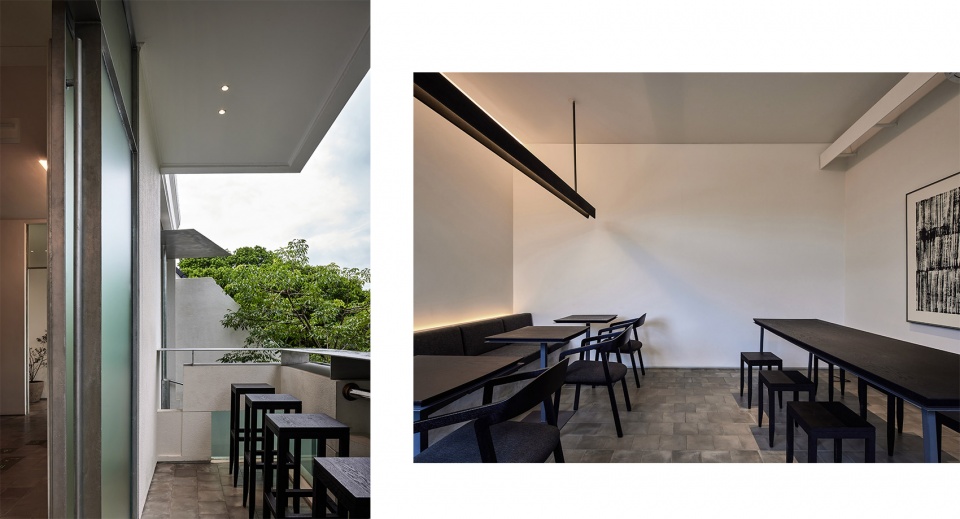
玻璃砖以“之”字形排列,确保了稳固的连接,同时让受力更加均匀。砖块之间的垂直缝隙不仅起到了通风作用,还为建造节省了20%的材料用量。
The glass bricks are arranged in a zig-zag manner to ensure a stronger connection and more even weight distribution. Later the bricks were stretched, creating vertical gaps between the bricks, allowing airflow in and out the glass brick wall and also saving the material usage by twenty percent.
▼材料:玻璃砖、酸性玻璃和钢,Material: glass brick, acid glass and steel © Salman Rimaldhi
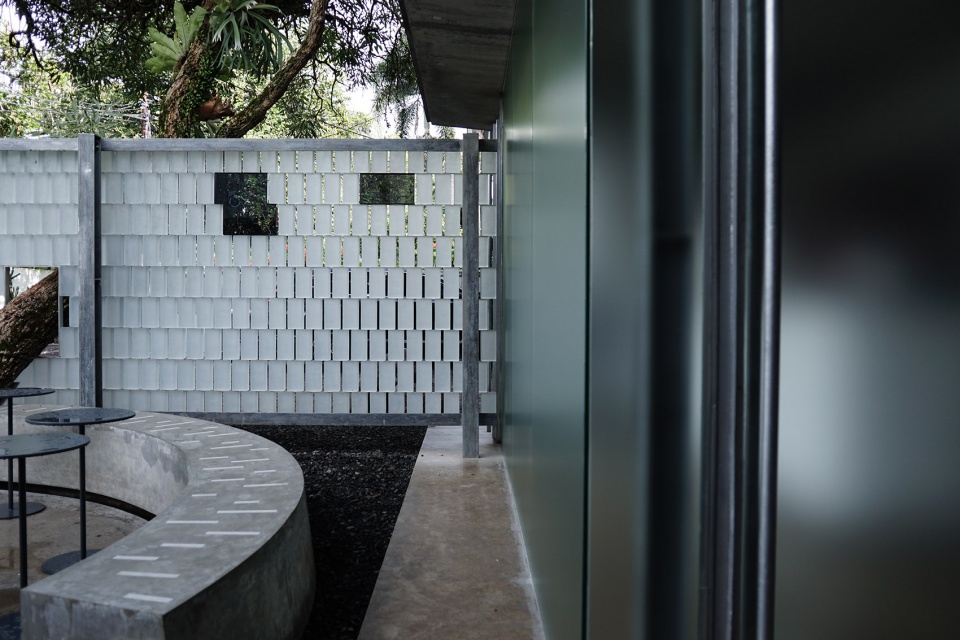
▼材料细节,Details © Salman Rimaldhi
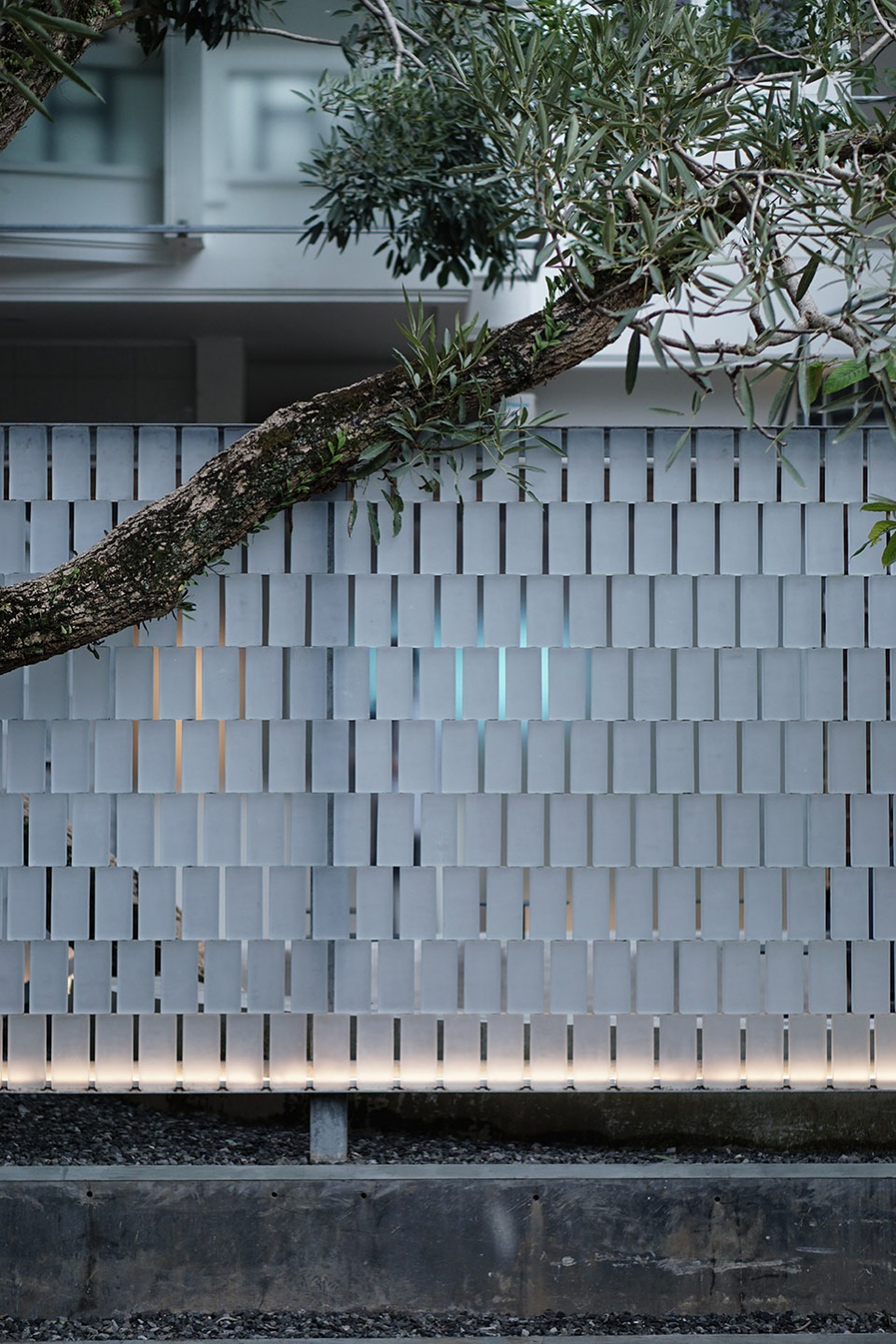
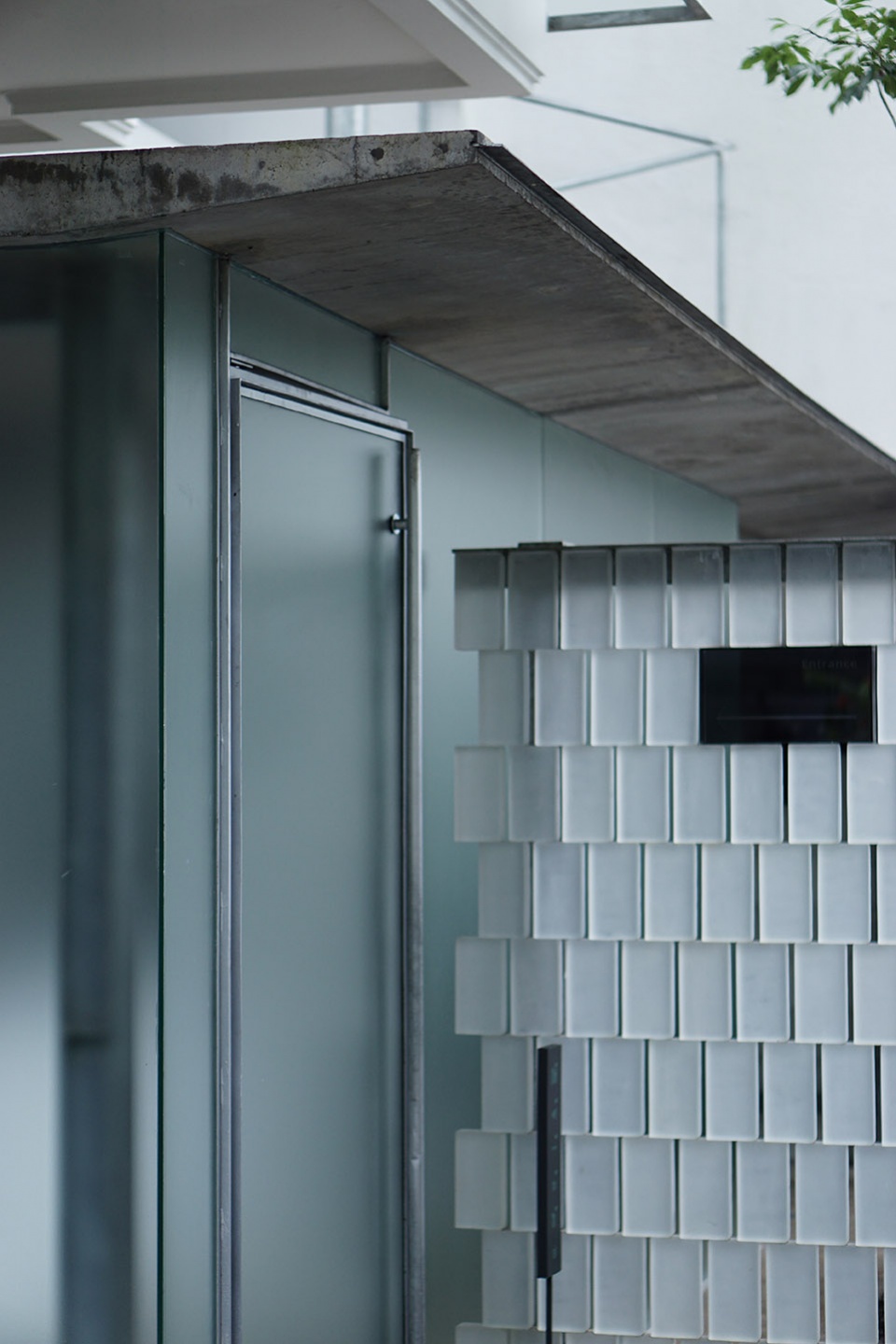
这种实用主义方法催生出了一套准则和模式,并被应用到整个空间当中,例如圆形露天座位和室内座位区的瓷砖地面,以及与建筑模式相协调的平面设计元素等。
The pattern that was a result of a pragmatic approach then becomes a set of rules that are carried out throughout the space. The repercussion could be found in the circular outdoor seating and the tiles flooring on the indoor seating. The environmental graphic design system applied following said rules by inserting the graphic design elements which form is in harmony with the architectural pattern.
▼圆形露天座位夜景,Outdoor seating night view © KIE
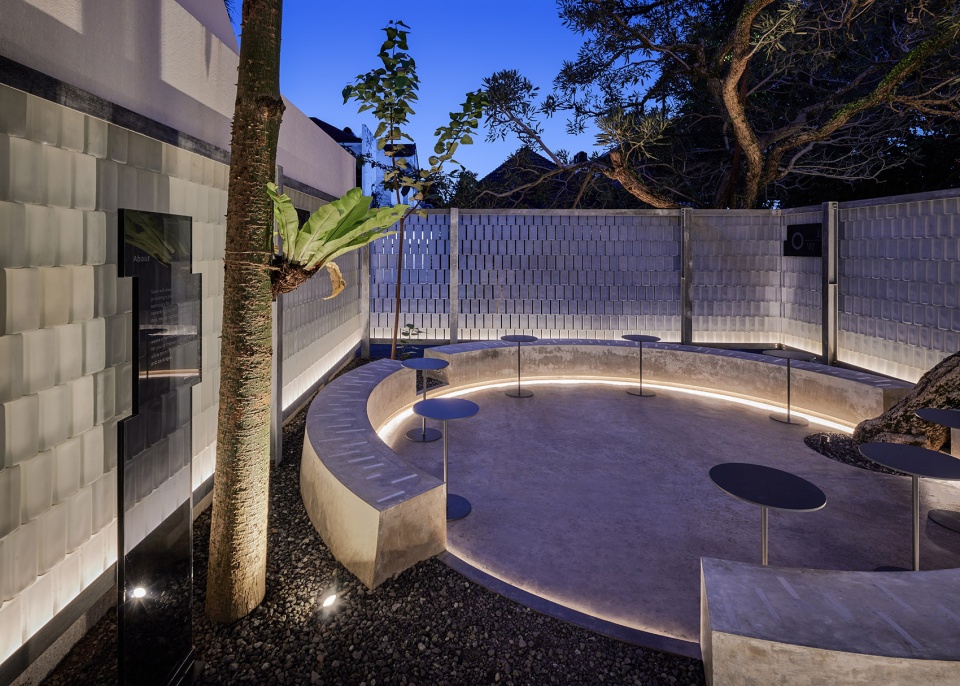
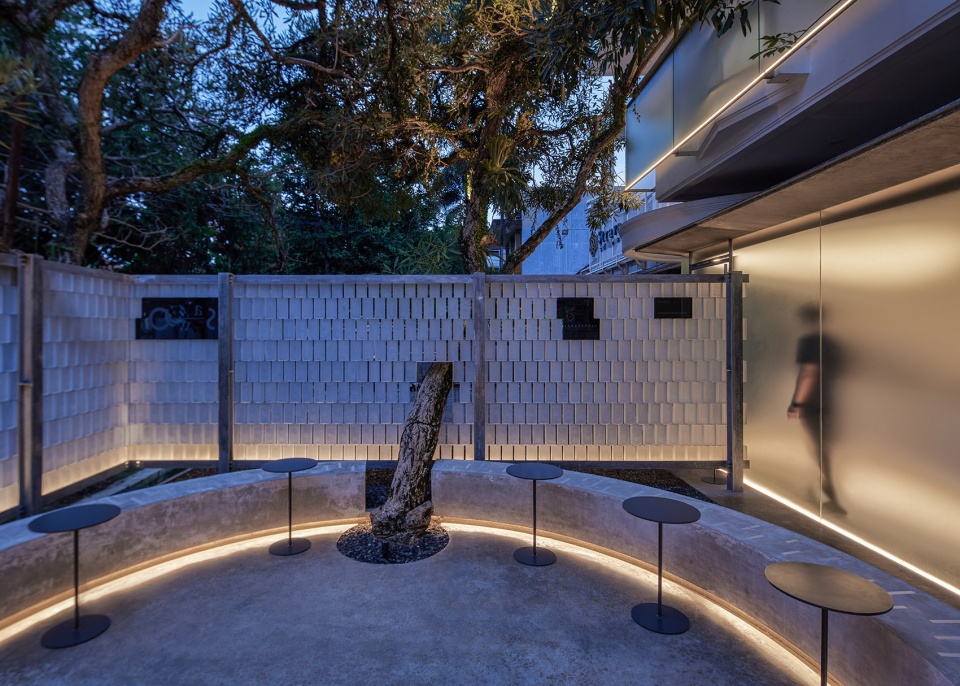
▼咖啡店外观夜景,Exterior view by night © KIE
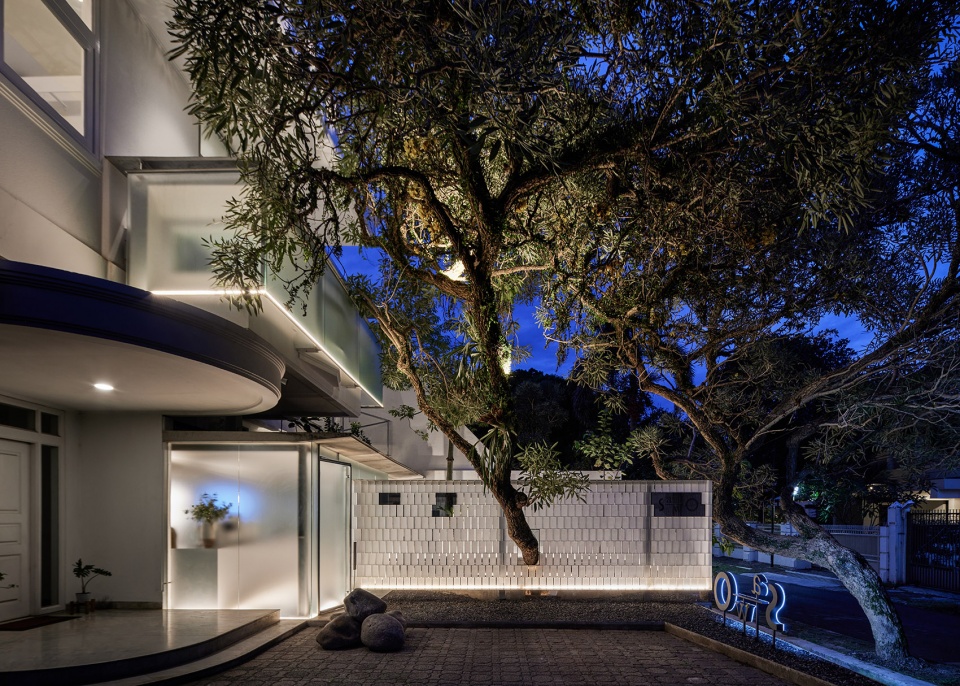
▼一层平面图,Ground floor plan © Dhanie & Sal
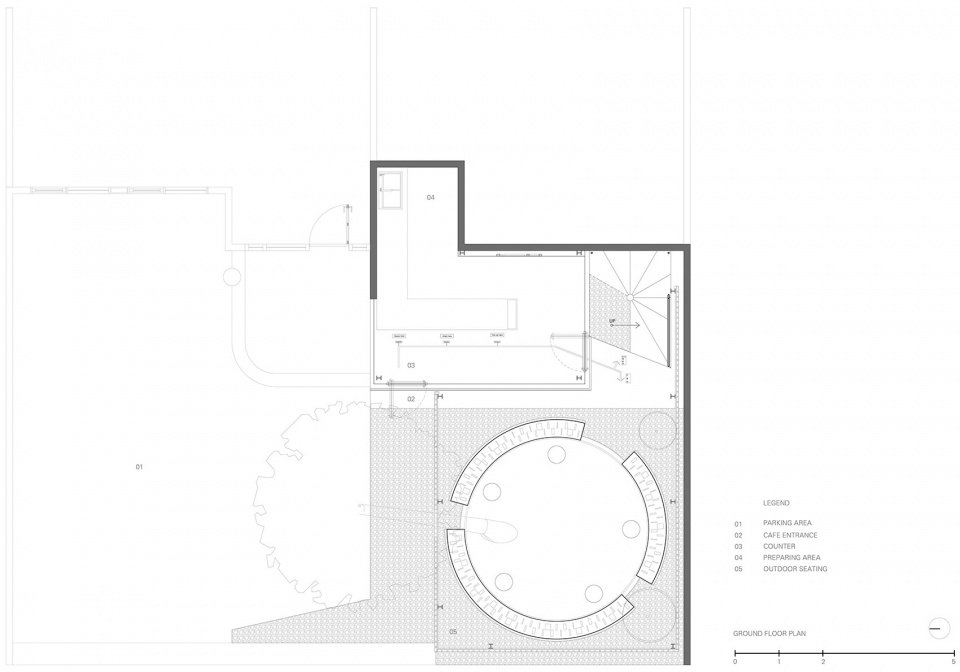
▼二层平面图,First floor plan © Dhanie & Sal
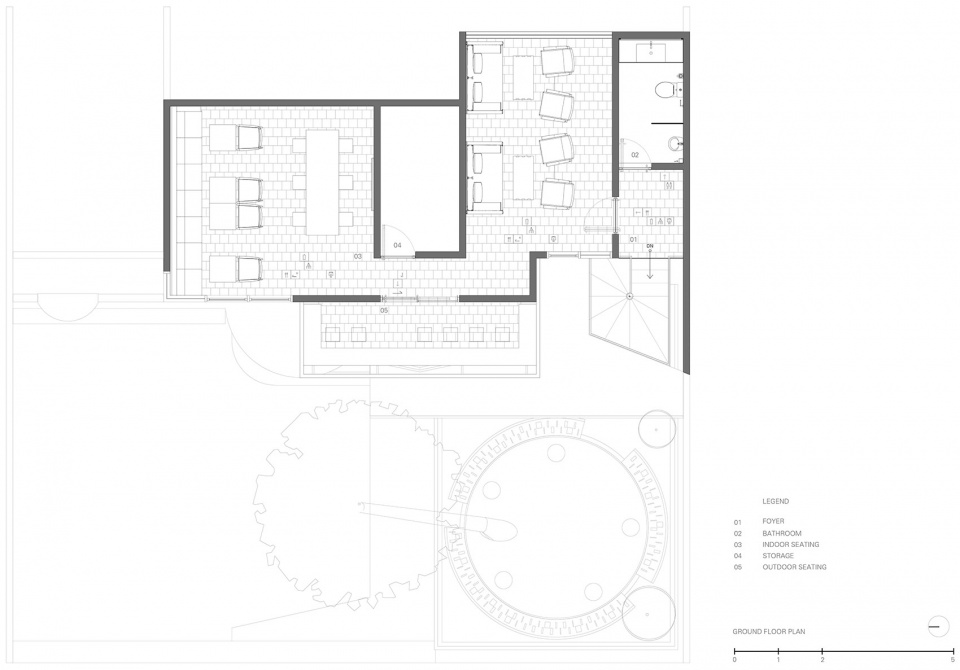
▼西立面图,West elevation © Dhanie & Sal
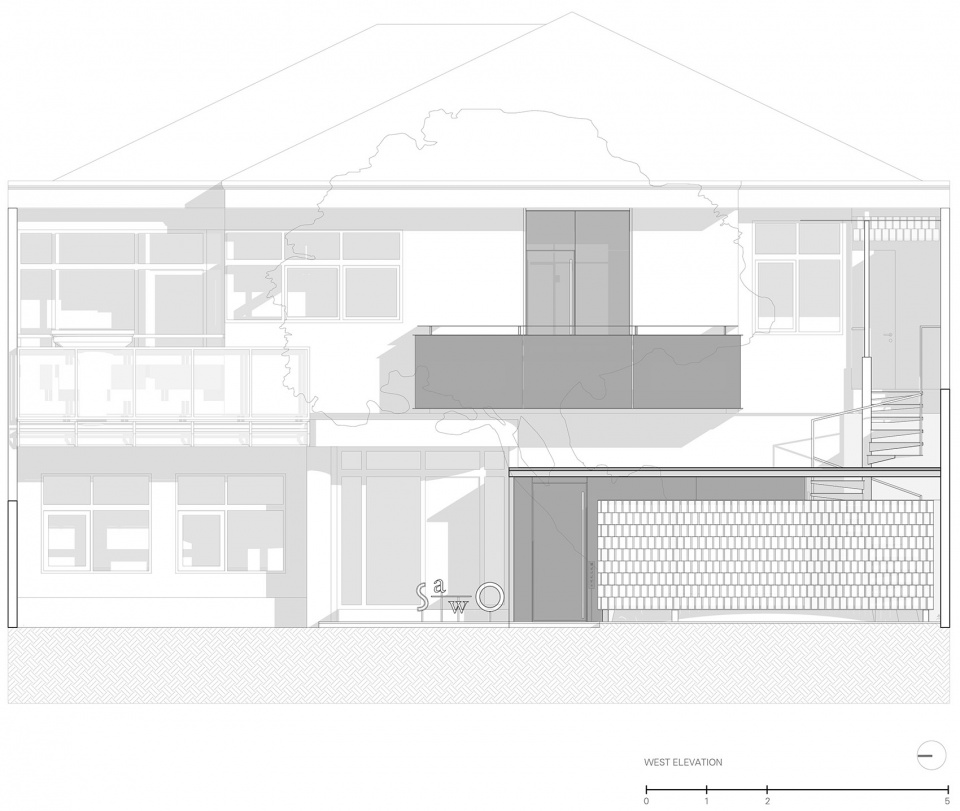
▼北立面图,North elevation © Dhanie & Sal
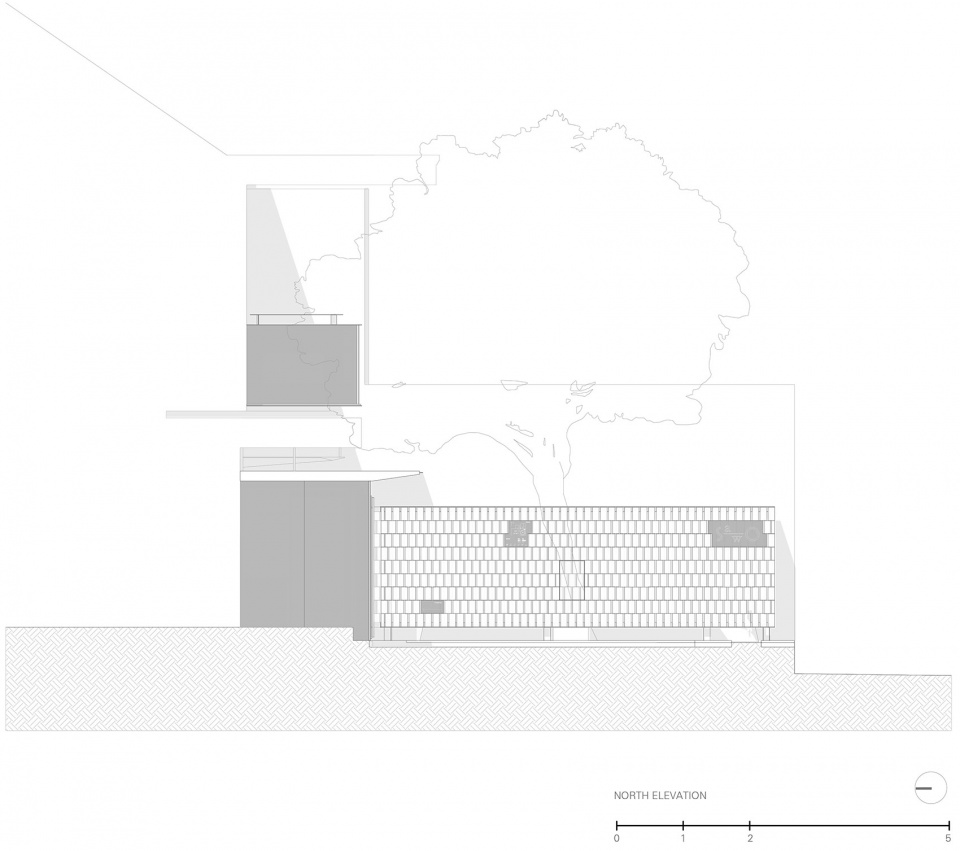
▼剖面图,Section © Dhanie & Sal











